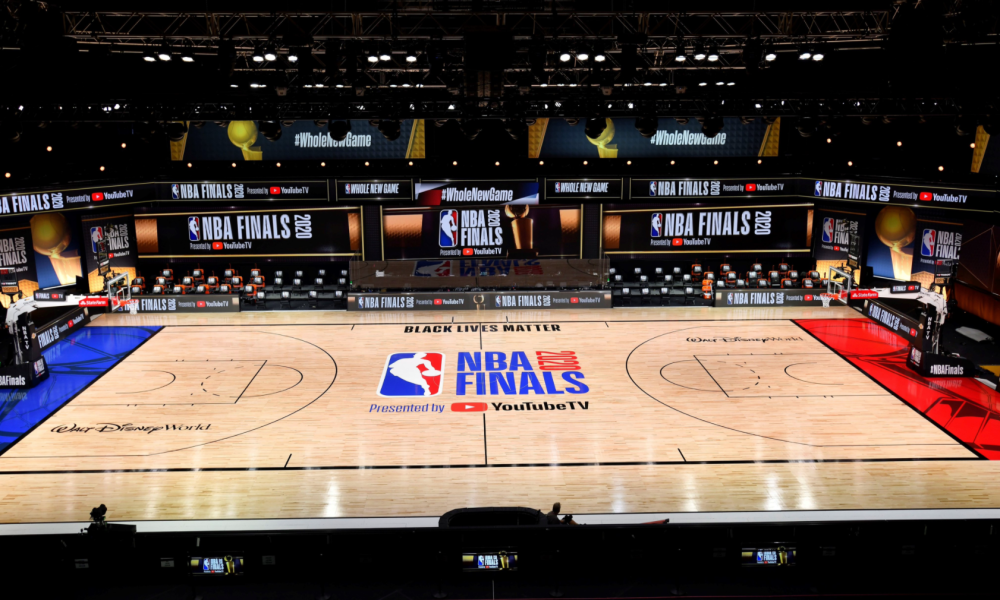


So how important is having your home field — or home court for that matter since the NBA Finals have tipped off between the Bucks and Suns? Is it actually an advantage for the home team?
A good argument can be made for baseball since the home team gets the last at-bat while in football, home-field can be another huge advantage with crowd noise yet that’s only a relative guarantee up until neutral-site venues come into play during the Super Bowl or college bowl games.
As the regular season found its final stretch in the NBA in 2021, the Clippers, who at the time were 11/2 favorites to win the NBA Championship, left out key starters in the final games including Kawhi Leonard and Paul George. As a result, Los Angeles lost back-to-back games to teams with a combined 39-104 record, dropped to the four seed in the West, and avoided what could’ve been a daunting first-round matchup against their in-city rivals and defending champion Los Angeles Lakers.
Not to mention home court in this sense would be a push since both the Lakers and Clippers share the Staples Center. However, there may be another factor here that may work as a disadvantage for the Clippers when you consider the Lakers being the more popular team in LA but I digress.
When it comes to the notion of dropping games at the end of a season to get what you think is a more favorable matchup it didn’t start with the Clippers this season. It has been done before but is much more calculated given potential risks down the road.
For instance, there’s the risk of embarrassment in losing to a team you were looking to play in the playoffs due to a perceived advantage you thought was there. Not to mention the bulletin board material you would be providing to the other team given the disrespect.
There’s also the risk you run of losing home court in any of the subsequent rounds, especially in the NBA Finals because when it comes to the idea of home-court advantages, the one you get in the Championship is huge.
Of the 71 NBA Championship’s, 50 (70 percent) of the teams who secured home-court advantage for the final series went on to win the title.
Now, this can, of course, be chalked up to the team who has a home-court advantage simply being the better team which is true (in most cases), however, when you dig a little deeper into the percentages, skill level may not tell the entire story.
Over the past five seasons in the NBA, 57 percent of the wins within each given year came from the home team. 2020-21 saw that number dip a bit to 54 percent but when it came to the Finals that number once again goes back up to 61 percent.


Much of the advantage in the numbers comes with games one and seven where the home team has won 75 percent of the time over the past 71 years. For a game seven in the Finals which has happened 19 times over the same span, the home team has won 79 percent of the time.
Those very few road teams who managed to pull off a game seven win (four teams to be exact) in large part came from a completely different era of professional basketball.
During a 10-year span from the late 1960s to the late 1970s the 69′ Boston Celtics managed to beat the Los Angeles Lakers, the 74′ Celtics beat the Milwaukee Bucks, and the 78′ Washington Bullets beat the Seattle SuperSonics.
After that 78′ season and over the course of 38 years, six home teams would go on to win a game seven given the opportunity. This was before the Cleveland Cavaliers led by LeBron James managed to shock the Golden State Warriors when they came back from a 3-1 deficit to win it all in 2016 thanks to a game seven win on the road. And all this took was having arguably the best player of a generation (and possibly all-time) at your disposal, a luxury most teams in the NBA simply don’t have.
All of this just further underlines the importance of home-court when it comes to the percentages, especially when you consider the team who doesn’t have home-court only getting two opportunities in games two and five to snag a win on the road.
Now there may be something to slightly consider in all of this and that has to do with the NBA tinkering with their best-of-seven formats for the Finals.
From 1950 until 1984, the Finals were structured in the same 2-2-1-1-1 format that the League currently goes with today. This would mean the team with the better record would host games one and two, game five, and game seven.
However, between 1985 and 2013 the NBA switched to a 2-3-2 format to cut down on cross-country travel meaning the team with home-court had to play three consecutive games on the road. Although the team with home-court still had a better percentage of ultimately taking the series, their chances dipped to 66 percent from 71 in the years before the change.
But, once again, since moving back to the more traditional 2-2-1-1-1 format, home-court teams increased their dominance going 6-1 over the stretch.
So obviously home-court in the NBA is nothing to brush off or discredit, especially considering arenas once again opening their doors to bigger crowds with the pandemic hopefully now winding down.










